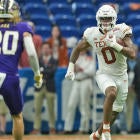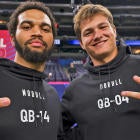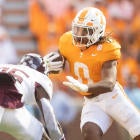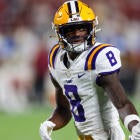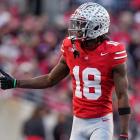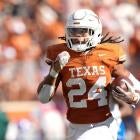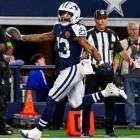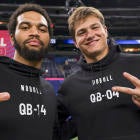From 2007 until 2017, Bruce Arians called plays as an offensive coordinator or head coach. After taking a year off to help out our NFL on CBS broadcasts, Arians is back as the head man in charge, this time of the Tampa Bay Buccaneers.
But even though he's known for his aggressive "no risk-it, no biscuit" philosophy, he doesn't intend to call plays.
Arians has chosen to delegate the offensive schematics to Byron Leftwich, a protégé of his. A former first-round pick and quarterback the Jaguars, Leftwich has minimal playcalling experience and has barely even coached. He was an intern in 2016, a quarterbacks coach in 2017 and got promoted to interim offensive coordinator last season after the Cardinals fired Mike McCoy after seven games.
Leftwich called plays for nine games last year using someone else's playbook with the worst offensive team in the league. Going off of his 2018 won't teach us a lot.
But we do believe Leftwich has been heavily influenced by Arians — he referred to his playcalling style as "no risk-it, no biscuit, Part Two". Thus, it's Arians' tendencies we should look at since they'll be reflected in the shots Leftwich calls. And there is a lot to look at there.
Arians called plays for three teams over 11 consecutive years (Steelers 2007-2011, Colts 2012, Cardinals 2013-2017). Here's how things shook out:
Pass-run ratio
You can see the rise in passing from Arians as he left Pittsburgh, thrived in Indy, and then landed in Arizona, where he had a 60-40 pass-run split. He clearly was on board with the league's move toward being more reliant on the pass. The only year he wasn't too pass-happy in Arizona was when Carson Palmer missed 10 games in 2014. Then again, Palmer missed nine games in 2017 and Arians still cut it loose with Blaine Gabbert and Drew Stanton.
Plenty of people already knew to expect Jameis Winston to throw plenty in 2019. This info cinches it. Save for the Bucs unearthing an incredibly strong run game (LOL), Winston should be in line for over 35 pass attempts per game. He's had 30 career games with at least 35 pass attempts, topping 300 yards in 14 of them and throwing two or more touchdowns in 15 of them. Wish those results were better — it'll be on Leftwich and Arians to bring that out of Winston.
Running back runs per game
Obviously this was going to go in the opposite direction of Arians' passing tendency. Before he went to Indy, he'd follow the then-mandate of the Steelers and run the ball a bunch. Only once in Arizona did Arians exceed 25 carries per game from his backs — in 2015 when he had a young David Johnson and a surprisingly spry Chris Johnson. But even with Johnson breaking out the year after, Arians ran it less.
He's thrived with backs like Johnson (6-1, 224 lbs) and Rashard Mendenhall (5-10, 225 lbs). These are/were strong, physical backs with the ability to play three downs. Peyton Barber has the size that's in line with these kinds of backs but doesn't have the chops to play in passing situations. Ronald Jones is a little lighter and certainly didn't play with much physicality last year, nor could he contribute much as a receiver. There's a pretty good chance the Bucs' top running back isn't on the roster as of this writing.
Reception distribution
Again, there's no surprise here that receivers dominate Arians' offenses. He's coached up some great ones and will have no shortage of talent in Tampa Bay. We know Mike Evans and Chris Godwin will be there. We know there will be a deep threat, whether it's DeSean Jackson or the Bucs bringing in someone with familiarity in Arians' system like John Brown or even a rookie speedster.
Don't be too scared off by the 19.2 percent of catches that the running backs had — it's weighed down by Arians' days before he hit Arizona. With the Cardinals, Arians' backs had 22.1 percent of the catches, a great number to hope his rushers land in 2019 and beyond. Figure that Leftwich will implement plenty of running back receptions, benefiting whomever leads the way for the Buccaneers in the backfield.
You also shouldn't be too scared off by the 18.0 percent of tight end catches. With the Cardinals, that percentage fell to 15.8, but a lot of it had to do with who he had at tight end. Jermaine Gresham, John Carlson and Rob Housler were as good as it got for Arians with the redbirds. With the Colts, he used Dwayne Allen and Coby Fleener to cobble together 21.8 percent of the team's catches, and Heath Miller had some seriously good years with the Steelers.
The hope is Arians and Leftwich take one look at O.J. Howard and find ways to use him as more than a blocker. Perhaps they'll utilize Cameron Brate too if they opt to keep him. Maybe Arians and Leftwich's arrival will keep Howard from achieving beyond expectations, but as tight ends go, he should be useful. Howard could especially be clutch if the Bucs don't conjure up a bona fide slot receiver (Adam Humphries is a free agent).














